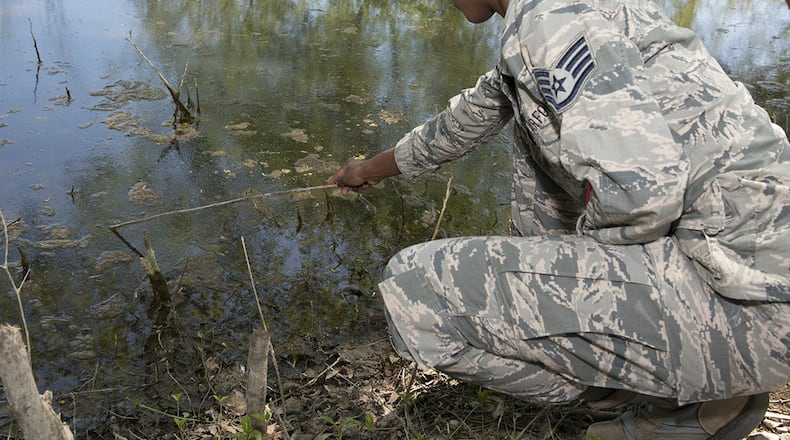In Ohio, mosquitoes put the local population at a higher risk for West Nile virus. West Nile virus is contracted when an infected mosquito bites a person. One in five people infected with West Nile virus will develop symptoms such as fever, headache, body ache, joint pain, nausea or a rash. Unfortunately, there is no vaccine available to prevent infection by this virus.
Mosquito activity in Ohio is at its highest from June through September. The Wright-Patterson Air Force Base Public Health flight conducts active mosquito vector surveillance across both Areas A & B of the base. This surveillance includes mosquito trapping and sending the female mosquitos to be tested for various vector-borne diseases.
There are steps you can take to protect yourself and your family from the West Nile virus:
• Remove standing water on your property to prevent mosquito reproduction. Examples include: barrels, holes in the ground, children’s toys, anything that can collect water.
• Use insect repellant containing DEET, picaridin, IR3535, oil of lemon eucalyptus, para-methane-diol, or 2-undecanone. Treat clothing with permethrin as directed by the product label.
• Wear long sleeve shirts and pants during the hours (dusk and dawn) when mosquitoes are most active.
Mosquitos are not the only vectors that transmit disease. Ticks spread Lyme disease, and although Lyme disease is not endemic in the state of Ohio, it is still possible to contract it through a tick bite. Ohio is home to the American dog tick, Blacklegged (deer) tick and the Lone Star tick. Symptoms of Lyme disease include fever, chills, fatigue, muscle and joint aches, swollen lymph nodes and rash that begins at the site of the tick bite and expands gradually, sometimes appearing as a “bulls-eye”. If you experience any of these symptoms, it is imperative you seek medical care immediately.
There are several ways you can protect yourself from a tick bite:
• Avoid areas with high grass.
• Cut mowed areas often.
• Use insect repellents.
• Wear pants and long sleeve shirts while hiking or doing other outdoor activities that involves high grassy areas.
• Treat your dogs and other outside pets for ticks. (Consult your veterinarian on appropriate tick medication).
• Always check your family and pets for ticks after outside play.
Remove any ticks found on your body using the following steps:
• Use tweezers to grab the tick as close to the skin’s surface as possible.
• Pull upward with steady, even pressure.
• Do not twist or jerk the tick as this can cause the mouth to break off and remain in the skin.
• After removal, clean the bite area with soapy water or alcohol.
• Dispose of a live tick by putting it in alcohol and placing it in a sealed bag or container.
The Wright-Patterson AFB Public Health flight also surveils for ticks. This includes tick drags in high traffic areas to assess if there are potential risks for tick exposure on base.
If you have any questions or concerns regarding mosquitos or ticks, please contact your Wright- Patterson AFB Public Health flight at 937-257-0098.
About the Author
